Which areas take the longest to dispatch to, on average?
Top 3 Longest Dispatch Time Locations
| Location Grouping: | Zipcode | Battalion | Fire Prevention District | Station Area | Supervisor District | City | Box |
|---|---|---|---|---|---|---|---|
| First | 94127, 45.32 min | B99, 14.44 min | 8, 14.50 min | 39, 38.26 min | 7, 16.26 min | Presidio, 14.91 min | 8611, 92.71 |
| Second | 94105, 19.02 min | B08, 14.15 min | 3, 11.585 min | 13, 15.32 min | 6, 10.415 min | Hunters Point, 12.00 min | 6344, 60.20 |
| Third | 94129, 15.55 min | B03, 11.66 min | 9, 10.71 min | 42, 12.32 min | 11, 10.36 min | Treasure Isla, 11.62 min | 6664, 32.53 |
Dispatch time is the difference in minutes between when the call was received, and when the responders arrive on scene.
Means were used to compute averages; for completeness, medians and means are both displayed plotted for each location type at the bottom of this page, as they can lead to different answers- mean is particularly sensitive to outliers, which are very much present.
How can this be reduced?
1. Route optimization and shortcuts, especially for urban and tough terrain areas.
We saw earlier that some of the hardest to reach areas are highly commercial, urbanized and concentrated, such as the Financial District and Downtown. Factors such as crowdiness and traffic are outside of the control of emergency responders, but work can be put into find possible driving shortcuts to destinations in the highly urban districts, as they are often the most troubled- For example, zipcode 94102 had the most emergency calls, and 94105 endured one of the slowest average response times- both are in downtown SF.
→ It is crucial to know the best way around tough terrain. Similar to zipcode 94127 which we highlighted here, the top three hardest boxes to reach, 8611 (Twin Peaks area), 6344 (John McLaren Park area) and 6664 (Hunter's Point) are all inside or surrounded by mountainous terrain, so it's definitely having an impact. If possible, detours and shortcuts to avoid slow-speed passages or roundabouts are essential to know of beforehand.
2. Enhanced marshalling of night responders.
From the Trend of Time of Day, we saw that late night responders take a longer time to respond to a dispatch notice than their daylight counterparts. While this is only natural, better strategies to ensure that night responders are well-rested and prepared for their night shift can help reduce dispatch times.
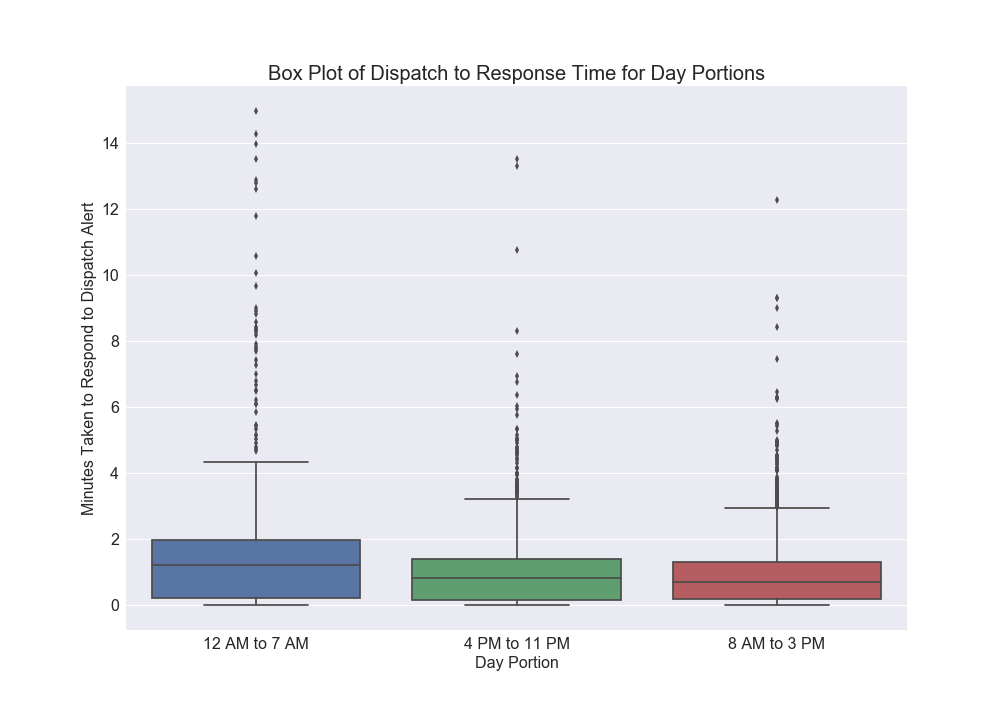
3. Increasing awareness of alternate emergency services or numbers.
I noticed that Presidio, the city with the slowest average response time (with zipcode 94129, the slowest median response time of any zipcode), is a unique location as it is actually a designated National Park, with many natural, wooded areas, hills, and greenery:
Why is it that SFPD takes so long to get there?
It turns out that Presidio actually maintains its own emergency service system, separate from typical SFPD- it is served by the United States Park Police due to its status as a national park site. As such, Presidio actually maintains its own emergency call hotline, and indicates the following on their website:
A possible cause for extremely high response times to Presidio is that people in emergencies are not calling the Presidio specific service and instead are calling 911 by cell phone, directing their calls to regular SFPD dispatch centers outside Presidio- a natural park area that is probably hard to navigate from the outside, especially by those unfamiliar with it, like non-Presidio responders.
→ So, increasing awareness of the separate number for emergency services directly serving Presidio and similarly unique regions with their own dispatch services would most likely help reduce the high response time and increase efficiency of emergency handling overall.
Mean and Median Barplots of Response Time to Locations
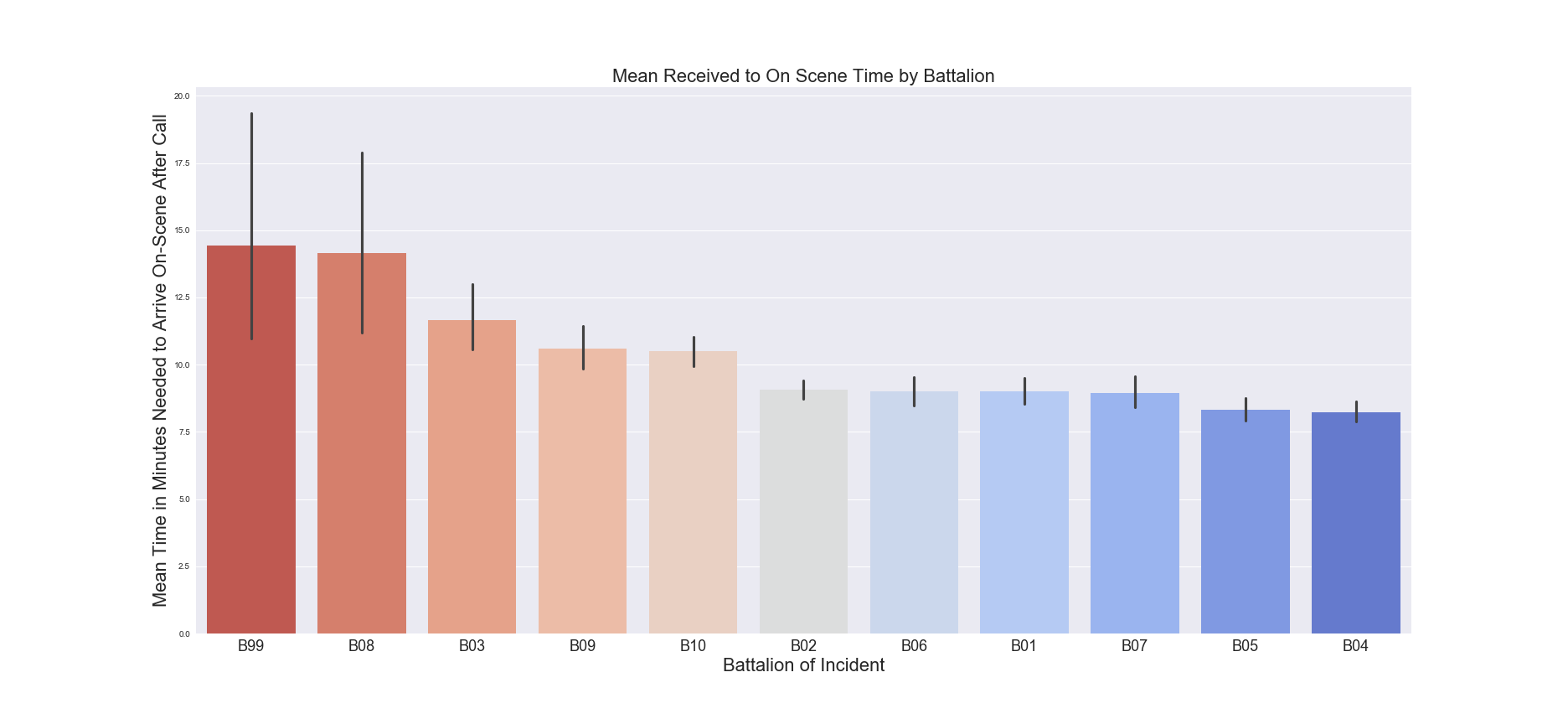

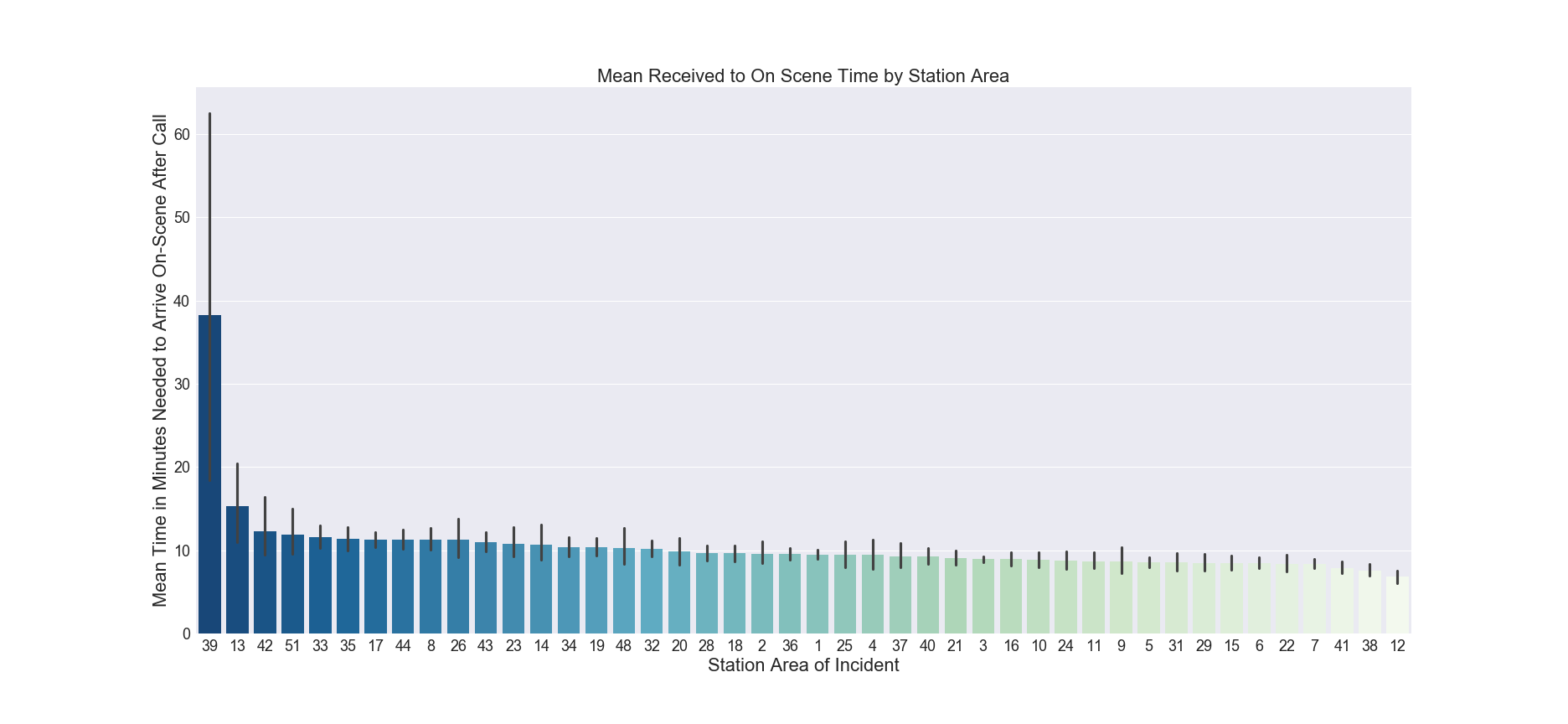
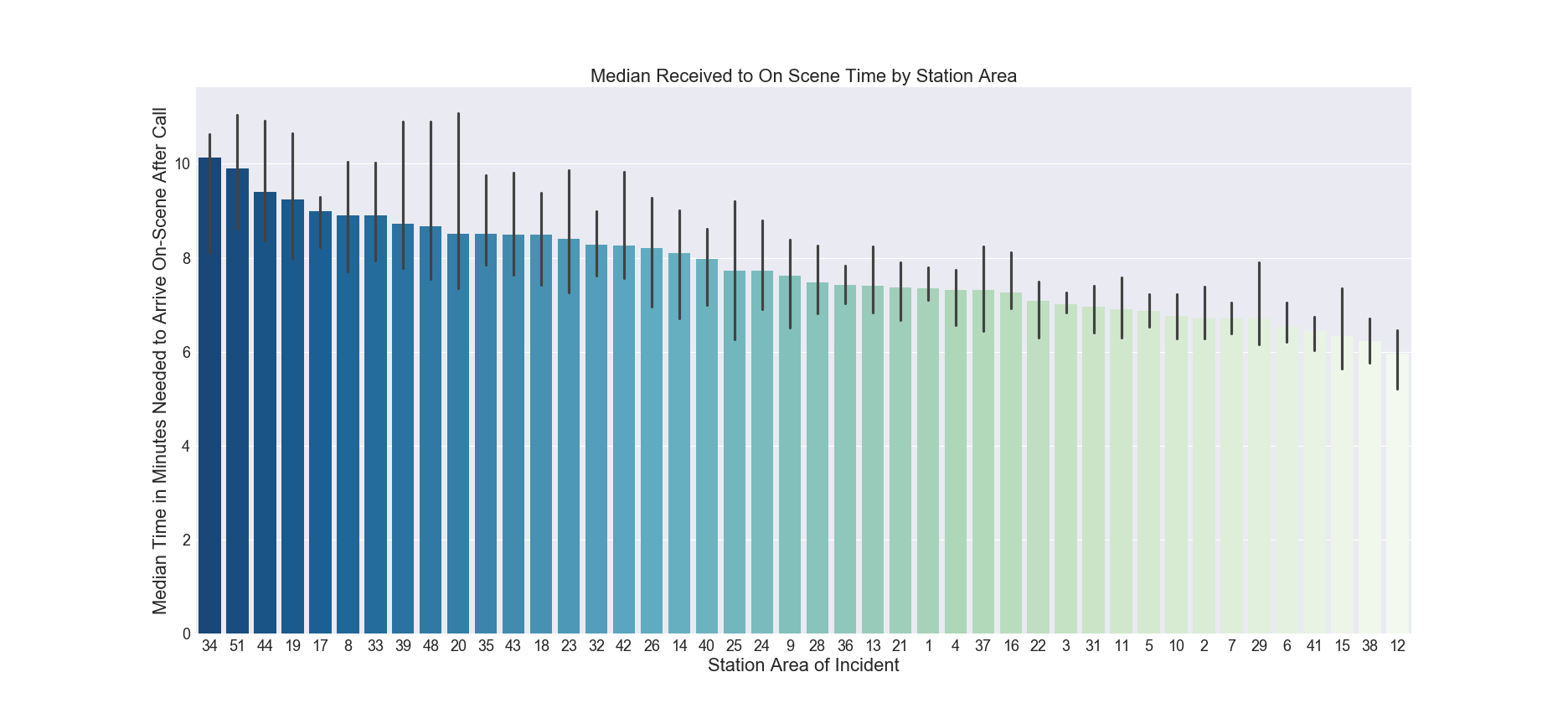


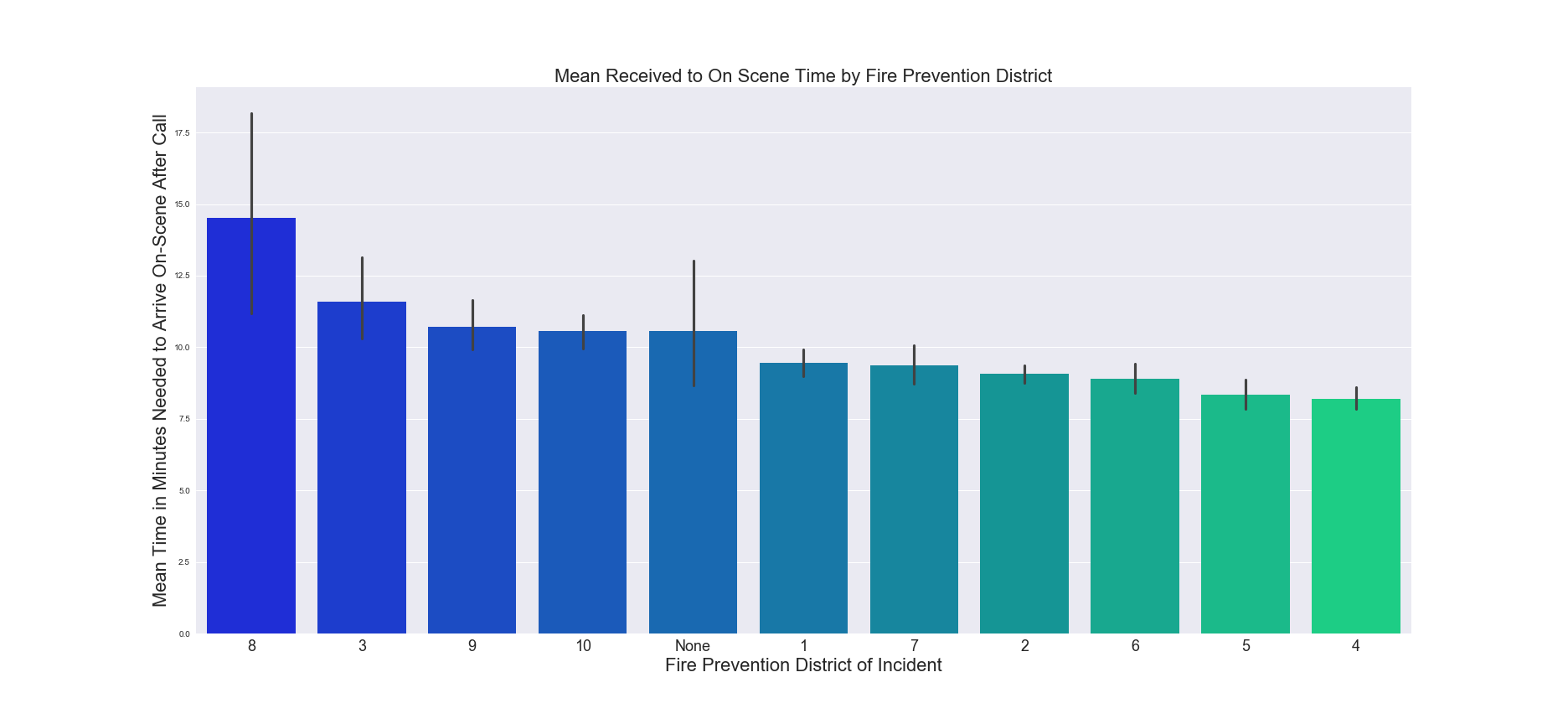
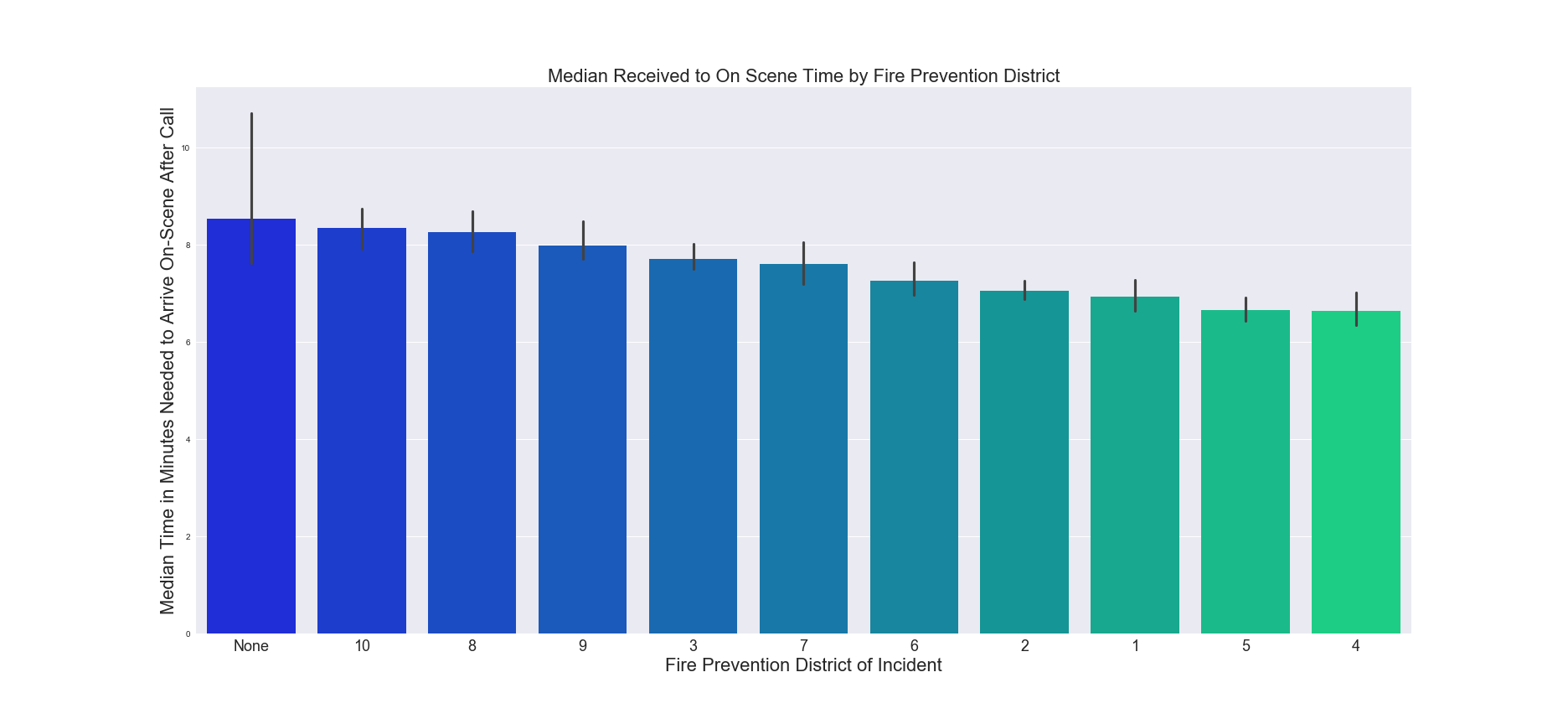
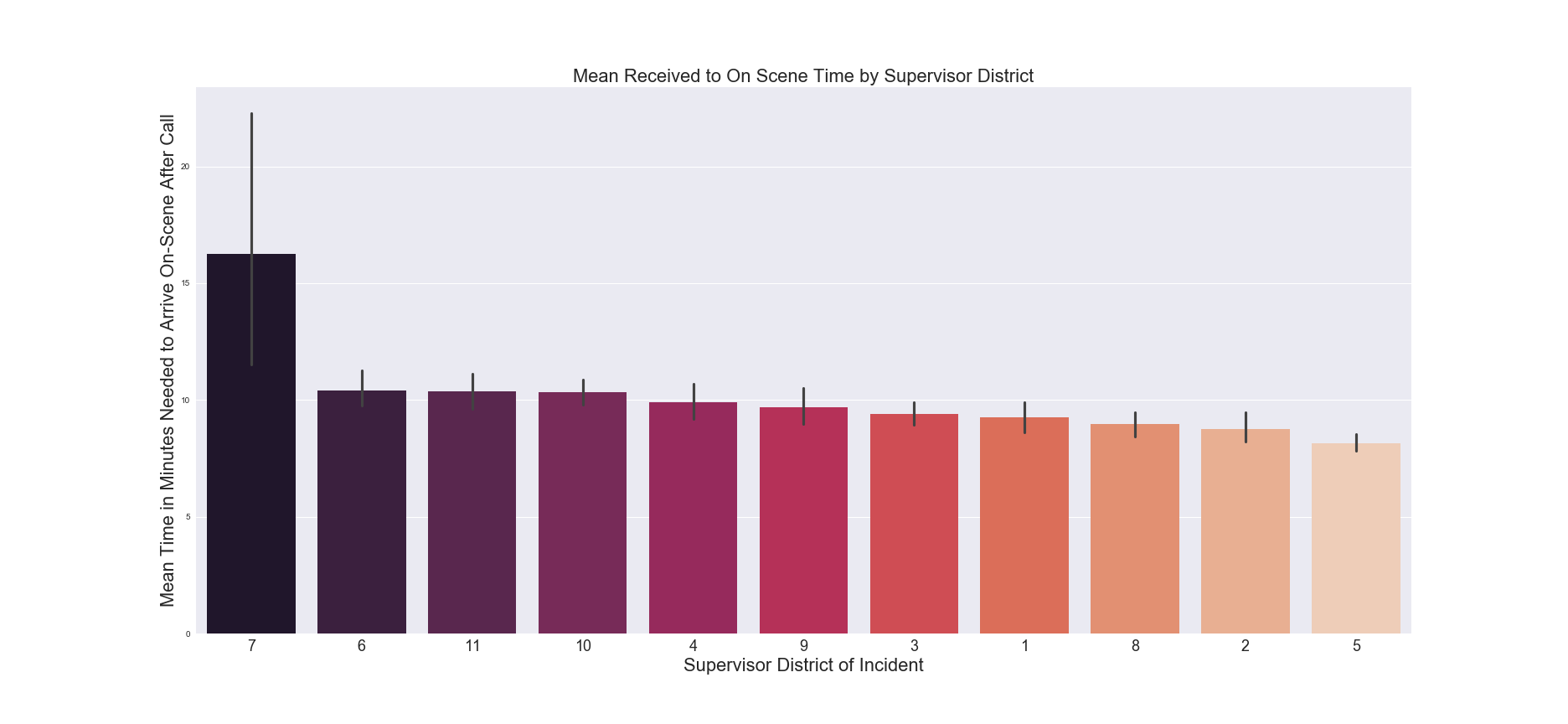
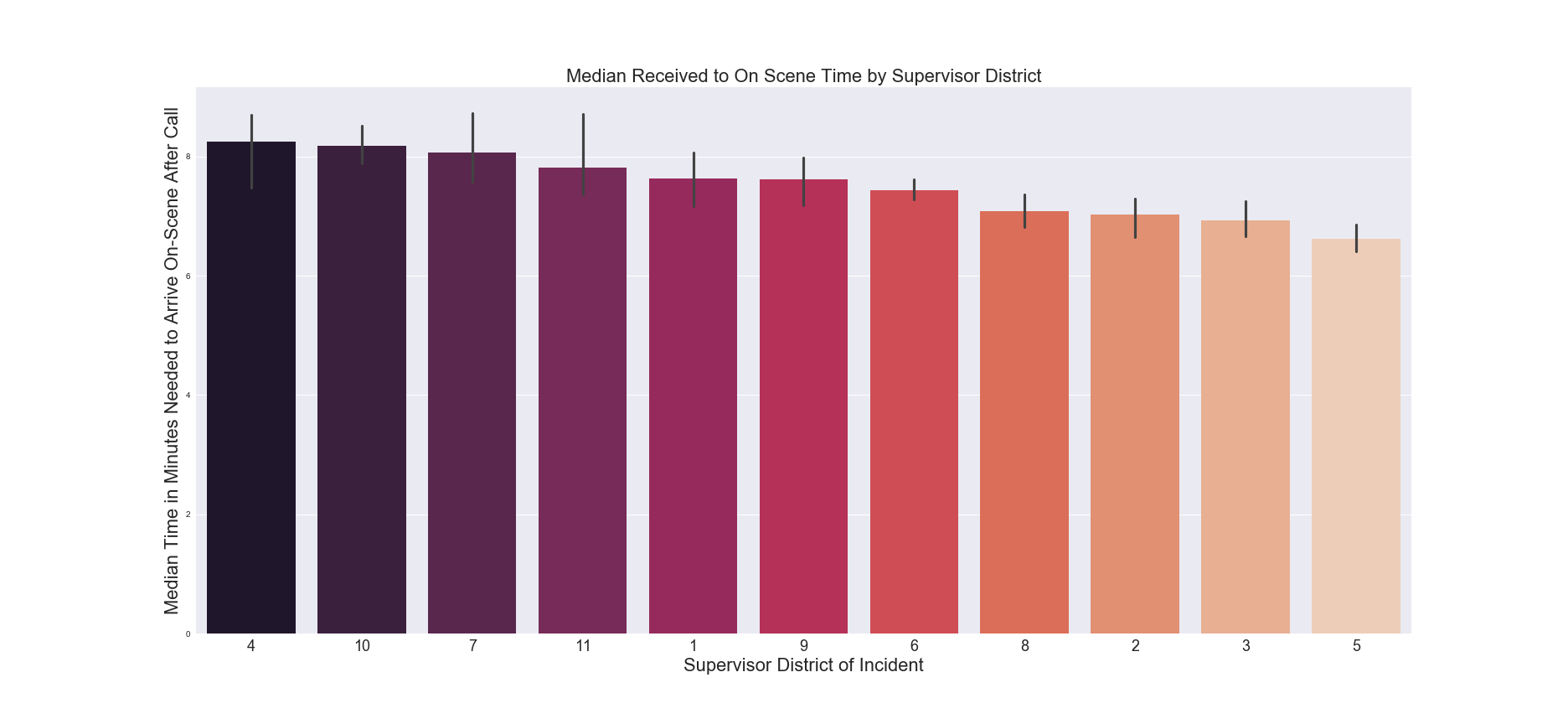
Shamikh Hossain
Contact information: ssh50@duke.edu